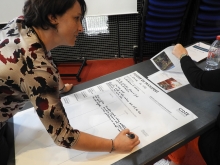Culture & Heritage
Across Europe’s regions and cities, culture is highly valued by residents and visitors alike. Cultural and creative industries are also a vital asset for regional economic competitiveness and attractiveness, while cultural heritage is a key element of the image and identity of cities and regions, and oftentimes the focus of city tourism. Integrating culture and heritage in regional and local development strategies stimulates the development of creative businesses; promotes traditional cultural assets, brings spill-over effects to the wider local community.
Related networks
CO4CITIES
CO4CITIES
CO4CITIES is the UIA - URBACT Transfer Mechanism pilot network that transfers the methodological structure of UIA CO-CITY: the Regulation on...
Latest activities
News
Cities pushing the agenda for cultural inclusion
As part of the Urban Agenda Partnership on Culture/ Cultural Heritage , URBACT is leading on two timely actions exploring the interface between...
Article
Memories can't wait, heritage as urban regeneration by Lead Expert Miguel Rivas
Can heritage be an engine for urban development? by Miguel Rivas, KAIRÓS Lead Expert
Article
“Be a voyager, not a tourist:” Introducing the Action Planning Network Tourism-Friendly Cities
“I welcome in my restaurant voyagers, not tourists. People who are curious and respectful of the local lifestyle, who appreciate that the daily menu...
Article
“Culture with everyone”: Why creating culturally inclusive cities is changing the way capital city policymakers approach their work
Happy, healthy, prosperous cities are rich in culture but culture does not enrich and empower everyone equally.
Article
Urban Solutions: five early lessons from the URBACT Transfer Networks
Find out why (and how) to share urban good practices!
Library
Image 11 April 2016
Document 02 November 2012pdf - 7.49 MB







